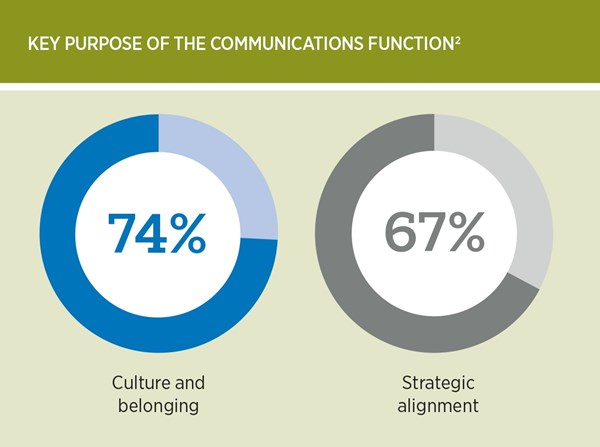Authors: Sharn Kleiss Pepper Krach

Communication has a role in educating employees about their benefits that's often underutilized or even untapped. Understanding what communication resources offer, why they're foundational to perceived value, and when and how to use them is essential to delivering an optimal experience.
While employers continue to offer a broad selection of benefits, many want better results. As a means to that end, a recent report found that 74% of employers are placing more importance on total rewards communications in 2023.1
Benefits design and implementation undoubtedly impact workforce satisfaction, so it's important to be aware of factors that can get in the way of effective outcomes. If employees are overwhelmed by their benefits, they're often less inclined to use them, creating a cavalcade of issues. These issues include but aren't limited to decreased use, increased healthcare costs and declining employee satisfaction, which can lead to attrition.
Taking inventory is fundamental to a comprehensive understanding of the organization's full suite of benefits, and the extent of communication support needed to drive awareness and use. Although maximizing the quantity of benefits can increase employee choice, it often minimizes employer time for assessing individual impact and value.
Once employers have a complete view of their benefit offerings, they need to identify employees' communication preferences. These preferences are often actually expectations, and meeting them helps increase the odds that efforts to connect with employees and capture their attention are successful.
An effective communication strategy will hold the interest of employees by answering what's in it for them and simplifying how they access benefits. Tactics may include a variety of options such as personalized content, a link to targeted materials, or interactive tools that help employees navigate their benefits more intuitively.
Better talent management through more effective benefit communications
Clear communication shows a commitment to ensuring that employees can maximize the value of their benefits. And consistent communication helps keep everyone on the same page about related policies and practices. Through greater visibility and awareness, employers promote interest and involvement — creating a sense of ownership that encourages employee feedback and contributes to improvement.
About three-quarters of employers see a key purpose of the communications function as culture and belonging: creating an inclusive workplace where employees feel valued and energized. Two-thirds see strategic alignment as a key purpose.2 Strengthening the employer brand is another advantage of effective benefit communications that helps to retain and attract talent, while reducing turnover and recruitment costs.
Part of building a stronger employer brand and attracting more talent is also demonstrating a commitment to social issues. People want to work for businesses with purpose beyond profit. Yet more than 36% don't communicate with employees about environmental, social and governance (ESG) standards.2 With the importance of ESG on the rise, especially among younger talent, having a clearly communicated strategy will likely improve recruiting outcomes.

Simplifying design and implementation
Aligning the benefits strategy and implementation plan takes careful consideration. When coordinating the involvement of stakeholders, communications can be a conduit for an efficient process and effective results. Feedback loops help to create a continuous source of shared insights on employee needs and preferences, enabling a better match with their expectations.
Clarity is an especially vital component of communication during plan implementation. Accordingly, it's essential for benefits design to factor how employees will experience what they're offered, from the details of each benefit and eligibility criteria to how they'll be accessed. Considering the most important aspects of benefits design and delivery, up front, helps to improve strategic effectiveness and increase employee engagement and satisfaction.
The enhancement potential of digital
Advanced digital and virtual technologies can reduce the administrative bureaucracy that's sometimes encountered in benefits design. Automation and self- service often improve benefits navigation and access for employees. Personalized platforms, integrated with existing communications engines, also help simplify complex information while allowing employers to connect more efficiently with remote workers.
Digital messaging capabilities can target specific populations to increase relevancy, boost employee interest and enhance the employee experience. They also support content consistency and the integration of organizational communications — linking efficiency and effectiveness.
Evolutionary tech is expanding communication options from stalwarts like videoconferencing and tutorials to agile and highly efficient alternatives generated by artificial intelligence (AI). For example, push notifications and chatbots ("conversational agents") provide on-demand access to up-to-date benefits information and send reminders about enrollment. Emerging technologies like these — already the preferred benefits communication modes for many employees — can prepare employers for the large-scale transition ahead. Hyper-personalization (55%), AI (40%) and gamification (32%) are expected to impact internal communications over the next five years.2



